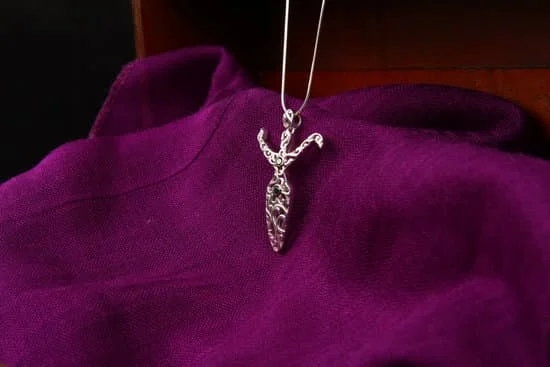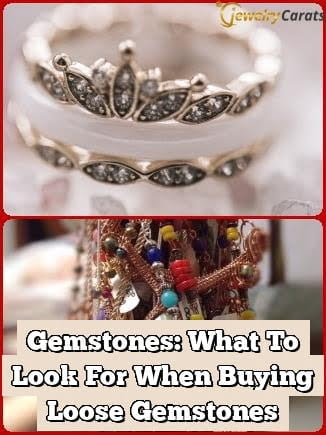Gemstones have long been admired for their beauty and rarity, and when incorporated into jewelry, they become exquisite works of art. In this article, we will explore the fascinating world of making jewelry with loose gemstones. Whether you’re a seasoned jewelry maker or a beginner in the craft, this guide will provide you with valuable insights and step-by-step instructions to create stunning pieces that showcase the allure and versatility of gemstones.
One of the most captivating aspects of working with loose gemstones is the endless variety of options available. From dazzling diamonds to vibrant rubies, sapphires, and emeralds, each gemstone possesses its own unique appeal and characteristics. The color palette ranges from vivid blues and fiery reds to soothing greens and luminous whites.
Additionally, gemstones vary in clarity, cut, and carat weight, contributing to their individual charm. With such a vast selection to choose from, there is no limit to the creativity that can be expressed through gemstone jewelry.
Before delving into the process of creating jewelry with loose gemstones, it’s important to understand their types and qualities. Diamonds are known for their brilliance and durability, while rubies exude passion with their rich red hue. Sapphires captivate with their deep blue tones, while emeralds entice with their lush green shades.
Each type of gemstone has its own distinct properties that must be carefully considered when designing jewelry. Moreover, factors such as color intensity, clarity (or lack of visible flaws), cut (the proportions that determine how well a gemstone reflects light), and carat weight all contribute to a stone’s overall value and aesthetics.
With an appreciation for the mesmerizing beauty of loose gemstones established, we can now proceed to explore the necessary tools and materials required for creating exquisite jewelry pieces.
Understanding Loose Gemstones
When it comes to making jewelry with loose gemstones, it is essential to have a good understanding of the different types of gemstones and their unique qualities. This knowledge will not only help you choose the right gems for your designs but also enable you to educate your customers about the stones they are purchasing. In this section, we will explore the various types of loose gemstones and discuss the importance of their qualities.
Types of Loose Gemstones:
- Diamonds: Known for their exceptional brilliance, diamonds are one of the most coveted gemstones in jewelry making. They come in a range of colors, with white or colorless diamonds being the most popular.
- Rubies: With their vibrant red hue, rubies symbolize passion and love. They are highly valued for their rich color and hardness.
- Sapphires: Blue sapphires are perhaps the most recognized, but sapphires come in a variety of colors including pink, yellow, and green. They are prized for their durability and brilliance.
- Emeralds: The lush green color of emeralds makes them truly captivating. Considered one of the rarest gemstones, emeralds evoke a sense of elegance and luxury.
(Include more types as needed)
Qualities of Loose Gemstones:
- Color: The color of a gemstone is often its most important characteristic. It is determined by factors such as hue, tone, saturation, and distribution within the stone.
- Clarity: Clarity refers to the absence or presence of internal flaws (inclusions) and external blemishes on a gemstone. The clarity level can greatly influence a stone’s value and visual appeal.
- Cut: A well-cut gemstone enhances its beauty by maximizing its brilliance and sparkle. The cut determines how light interacts with the stone’s facets.
- Carat Weight: Carat weight refers to the size of a gemstone. It is an important consideration for jewelry makers as it affects the overall design and cost of the piece.
Understanding the types and qualities of loose gemstones will help you make informed decisions when creating your jewelry designs. This knowledge will also enable you to educate your customers, enhancing their appreciation for the gemstones they purchase.
Essential Tools and Materials for Jewelry Making
Jewelry making is a creative and rewarding hobby that allows individuals to express their personal style through unique and handmade pieces. When working with loose gemstones, it is crucial to have the right tools and materials to ensure a successful and professional-looking finished product. In this section, we will explore the essential tools and materials necessary for jewelry making with loose gemstones.
- Pliers: Pliers are one of the most versatile tools in jewelry making. They come in various types, including round nose pliers, chain nose pliers, and flat nose pliers. Round nose pliers are used for creating loops and curves, while chain nose pliers are ideal for gripping small components. Flat nose pliers are helpful for bending wires or holding objects firmly.
- Wire cutters: Wire cutters are essential for trimming excess wire or cutting through metal findings. It is important to choose wire cutters specifically designed for jewelry making to ensure clean cuts without damaging the gemstones or other components.
- Beading needles: Beading needles are thin and flexible needles used for threading beads onto stringing materials such as thread or wire. They come in different sizes, so it is important to select the appropriate size based on the beads’ hole diameter.
- Jewelry adhesives: Sometimes, jewelry making requires the use of adhesives to securely attach components together. An adhesive suitable for jewelry making should be clear-drying, strong, and resistant to water or solvents.
- Gemstone setting tools: If you plan to set your loose gemstones into metal bezels or prong settings, specialized tools such as bezel pushers or prong lifters will be required. These tools help secure the gemstone in place while ensuring a professional finish.
- Other miscellaneous tools: Additional useful tools include a ruler or measuring tape for precise measurements, a magnifying glass or jeweler’s loupe for close inspection of the gemstones, and a jewelry polishing cloth to keep your finished pieces sparkling.
In addition to tools, it is important to have a good supply of materials such as wires, threads, beads, findings (clasps, jump rings, earring hooks), and gemstone settings suitable for your desired designs. It is recommended to invest in high-quality materials to ensure durability and longevity of your creations.
By having these essential tools and materials readily available, you will be well-equipped to embark on your journey of creating beautiful jewelry with loose gemstones.
Planning Your Gemstone Jewelry Design
When it comes to creating jewelry with loose gemstones, planning your design is a crucial step in the process. This section will explore different design ideas and inspirations for incorporating loose gemstones into your jewelry pieces, as well as provide tips on how to effectively sketch and plan your desired design.
Exploring Different Design Ideas
The beauty of working with loose gemstones is that they can be incorporated into a wide range of jewelry designs. Whether you prefer a simple and minimalist style or something more elaborate and intricate, there are endless possibilities to explore. One popular option is to create a solitaire ring using a single gemstone as the focal point. This classic design allows the beauty of the gemstone to take center stage.
Another idea is to create a pendant necklace featuring a vibrant gemstone suspended from a delicate chain. This design allows for versatility, as you can switch out different colored gemstones depending on your mood or outfit. Bracelets are another excellent choice for showcasing loose gemstones, whether in a line of uniform-sized gems or alternating between different types.
Tips on Sketching and Planning
Before starting any project, it’s essential to sketch out your design to visualize how the finished piece will look. Start by drawing rough outlines of the jewelry item and indicate where the gemstones will be placed. Consider factors such as proportionality, balance, and how the gemstone will interact with other elements in the design.
Once you have an initial sketch, refine it by adding more detail and considering other design elements such as metalwork or additional stones. Take measurements of the chosen loose gemstone(s) to determine appropriate settings or accents that will complement their size and shape.
It’s also helpful to gather inspiration from various sources, such as fashion magazines, jewelry catalogs, or online platforms like Pinterest. Create mood boards or collect images that resonate with your vision, allowing them to influence and refine your design ideas.
By dedicating time to properly plan your gemstone jewelry design, you’ll ensure that the final piece is a true reflection of your creativity and vision. Don’t rush this step; instead, enjoy the process of exploring different possibilities and finding inspiration that will make your jewelry truly unique.
Step-by-Step Guide to Setting Gemstones
Setting gemstones into jewelry requires precision and careful craftsmanship. Whether you are a beginner or an experienced jewelry maker, this step-by-step guide will walk you through the process of setting loose gemstones into various types of jewelry settings. By following these instructions and using the right tools, you can create stunning pieces that showcase the beauty of your gemstones.
- Choose the right setting: There are several types of settings you can use to secure your gemstones in your jewelry piece. Some popular options include prong settings, bezel settings, and pavé settings. Each setting has its own unique look and characteristics, so choose one that best suits your design.
- Prepare the gemstone: Before setting the gemstone, make sure it is clean and free from any debris or residue. Gently clean it with a soft cloth or a mild cleaning solution specifically designed for gemstones.
- Positioning the gemstone: Carefully place the gemstone into the designated space in the setting. Make sure it sits securely and is properly aligned. Use tweezers or a small tool to adjust its position if needed.
- Securing the gemstone: If you are using a prong setting, carefully bend each prong over the gemstone to hold it in place. Be gentle but firm to ensure that the stone is secure without damaging it. For bezel settings, gently push the metal around the edges of the stone to encase it completely.
- Finishing touches: Once your gemstone is securely set in place, inspect the piece for any imperfections or gaps. Use a polishing cloth or a small brush to remove any fingerprints or residue on both the stone and setting. This will give your jewelry piece a polished and professional look.
Remember to take your time and practice patience when setting gemstones into jewelry. It may require some trial and error before you achieve the desired result, but with practice, you will become more skilled in this art form. By following these step-by-step instructions, you can create beautiful jewelry pieces that showcase the brilliance of your loose gemstones.
Enhancing Gemstone Jewelry
Adding a personal touch to gemstone jewelry is a great way to make your creations unique and meaningful. There are several ways to incorporate personalization into your designs, allowing you to create pieces that are truly one-of-a-kind.
One popular way to personalize gemstone jewelry is by incorporating birthstones. Birthstones are gems that correspond with each month of the year and are believed to hold special significance for those born in that month. By using birthstones in your designs, you can create personalized jewelry pieces that celebrate birthdays or other special occasions. An example of this would be creating a necklace with a pendant featuring the birthstone of a loved one.
Another way to add a personal touch to gemstone jewelry is by incorporating meaningful symbols. Symbols such as hearts, infinity signs, or religious symbols can help convey a specific message or sentiment. For instance, an infinity symbol pendant necklace could represent eternal love or friendship. You can also consider adding initials or names to your designs through engraved charms or personalized pendants.
In addition to birthstones and symbols, you can enhance gemstone jewelry by adding complementary gemstones or accent stones for a more elaborate design. Complementary gemstones are ones that pair well together visually and color-wise. For example, pairing sapphires with diamonds creates an elegant and timeless look.
Accent stones are smaller gemstones used alongside the main stone to highlight its beauty or add sparkle. They can be placed around the main stone in a halo setting or used along the band of a ring for added interest.
By adding personal touches to your gemstone jewelry creations, you not only make them more special but also give them sentimental value. Whether it’s through birthstone incorporation, meaningful symbols, or complementary and accent stones, these personal touches will make your pieces stand out and resonate with your customers on a deeper level.
Polishing and Protecting Your Gemstone Jewelry
Gemstone jewelry is not only beautiful but also holds sentimental value for many people. To ensure that your gemstone jewelry remains in its pristine condition, it is essential to know how to properly clean, polish, and protect it. Additionally, taking proper care of your gemstones will help maintain their shine and prevent any damage. In this section, we will discuss the importance of polishing and protecting gemstone jewelry and provide some tips on how to do so effectively.
Proper Cleaning Techniques
Cleaning gemstone jewelry should be done with care and attention to detail. Different gemstones may require different cleaning methods, so it is important to research the specific cleaning instructions for each stone. However, there are some general guidelines that can be followed for most gemstones.
One popular method is to use a soft toothbrush and mild detergent or soap mixed with warm water. Gently scrub the jewelry with the toothbrush, being careful not to brush too aggressively as this can scratch the stones or loosen them from their settings. Once cleaned, rinse the jewelry thoroughly under running water and pat dry with a soft cloth.
Polishing Techniques
Polishing gemstone jewelry helps restore its natural shine and luster. A common method for polishing gemstones is to use a jeweler’s polishing cloth or a microfiber cloth specifically designed for polishing jewelry. Simply rub the cloth gently over the surface of the stones in circular motions to remove any tarnish or dullness.
For more stubborn stains or dirt buildup, you may need to use a specialized jewelry cleaner. Always check that the cleaner is safe for use on your specific gemstone before applying it. Follow the instructions provided by the manufacturer carefully and avoid using harsh chemicals or abrasive materials as they can damage delicate gemstones.
Protecting Your Gemstones
To protect your gemstone jewelry from scratches, store each piece separately in a soft cloth or a lined jewelry box. This will prevent the gemstones from coming into contact with other jewelry pieces that might scratch their surface. It is also important to avoid exposing your gemstone jewelry to harsh chemicals, extreme temperatures, and direct sunlight for prolonged periods as these can cause damage.
Regular maintenance of your gemstone jewelry is crucial to ensure its longevity. By following these polishing and protection techniques, you can keep your gemstone jewelry looking stunning for years to come.
Remember, taking care of your gemstone jewelry is an investment in preserving their beauty and sentimental value. With proper cleaning, polishing, and protection techniques, you can enjoy wearing your gemstone jewelry for a lifetime.
Showcasing Your Gemstone Jewelry
With your beautiful gemstone jewelry creations complete, it’s time to share them with the world and make a profit. In this section, we will explore some valuable marketing and selling tips to help you showcase your gemstone jewelry effectively.
Firstly, it’s essential to create an attractive presentation for your gemstone jewelry. Consider investing in high-quality product photography that captures the beauty and intricacy of your designs. Clear, well-lit images will entice potential customers and give them a closer look at the details of each piece. Additionally, be sure to provide multiple angles and close-up shots to showcase the gemstones in all their glory.
In today’s digital age, having an online presence is crucial for any business. Create a professional website or online store where customers can easily browse and purchase your gemstone jewelry. Make sure that your website is user-friendly, visually appealing, and provides detailed descriptions of each piece. Incorporate search engine optimization techniques to improve visibility in online searches and consider using social media platforms to promote your work.
Don’t underestimate the power of word-of-mouth marketing. Encourage satisfied customers to leave reviews or testimonials on your website or social media pages. Positive reviews will build trust among potential buyers and increase the likelihood of making sales. Additionally, consider collaborating with influencers or bloggers in the jewelry niche who can feature your gemstone pieces on their channels.
Participating in craft fairs, art shows, and boutiques can also be an effective way to showcase and sell your gemstone jewelry in person. Research local events in your area and apply for vendor spaces early. Be sure to have eye-catching displays that highlight the unique qualities of your gemstone pieces. Engage with customers by sharing information about the materials used or offering demonstrations on how each piece is made.
By applying these marketing and selling tips, you can effectively showcase your stunning gemstone jewelry creations and attract customers from various channels – both online and offline. Remember to stay passionate about your craft, be persistent, and continue to hone your skills as a gemstone jewelry maker. With determination, hard work, and a splash of creativity, your handmade pieces are sure to captivate the hearts of jewelry enthusiasts everywhere.
Conclusion
In conclusion, the art of making jewelry with loose gemstones offers a beautiful and versatile way to express your creativity and craftsmanship. Throughout this article, we have explored the allure and preciousness of loose gemstones in jewelry-making. We have discussed various types of gemstones, their unique characteristics, and the importance of qualities like color, clarity, cut, and carat weight.
Additionally, we have delved into the essential tools and materials needed for working with loose gemstones, providing detailed explanations of each item’s purpose and usage. We have also offered tips on planning your gemstone jewelry design effectively, exploring different design ideas and inspirations.
Moreover, we have provided a step-by-step guide to setting gemstones into various types of jewelry settings, as well as suggestions for enhancing your creations with personal touches. Furthermore, we emphasized the significance of properly cleaning, polishing, and maintaining your gemstone jewelry to ensure its longevity.
Finally, we encourage you to embrace the artistry of gemstone jewelry making. Unleash your creativity and explore this captivating craft that combines both artistic expression and meticulous craftsmanship.
Whether you choose to make one-of-a-kind pieces for yourself or dive into selling your creations online or through craft fairs and boutiques, creating jewelry with loose gemstones is sure to bring joy and satisfaction. So gather your tools, select your favorite gems, and let your imagination run wild as you embark on this fulfilling journey of creating stunning pieces that will be cherished for generations to come.
Frequently Asked Questions
What to do with a loose gemstone?
If you have a loose gemstone, there are several options for what you can do with it. One possibility is to have the gemstone set in a piece of jewelry, such as a ring or a pendant. This allows you to showcase the beauty of the gem and create a unique and personalized piece.
Another option is to keep the loose gemstone as a collector’s item or investment. Gemstones can appreciate in value over time, so holding onto it might be a wise decision if you believe its worth will increase in the future. Lastly, if you no longer wish to keep the loose gemstone, you can consider selling it to someone who might be interested in purchasing it.
How do you set loose stones?
Setting loose stones requires some skill and precision, but it can be done with the right tools and techniques. The first step is choosing an appropriate setting for your stone. This could involve selecting a pre-made setting or having one custom-designed according to your specifications.
Once you have your setting ready, carefully secure the stone using prongs, bezels, or other types of settings depending on your preference and the type of stone involved. It’s important to ensure that the stone is securely held in place while also allowing sufficient light to enter and enhance its brilliance. Professional jewelers often use specialized equipment like torches or soldering techniques to set stones successfully.
Can you make jewelry out of gems?
Absolutely! Gems make excellent materials for creating stunning jewelry pieces. Whether it’s diamonds, rubies, sapphires, emeralds, or any other precious or semi-precious gemstones, they can all be used in jewelry making.
Gemstone jewelry offers endless possibilities for creativity and personal expression as each stone possesses unique qualities that contribute to its overall appearance when incorporated into a design. From earrings and necklaces to bracelets and brooches, there are countless styles of jewelry that can be crafted using gems as focal points or complementary accents. Beyond their aesthetic appeal, gemstone jewelry also carries symbolic or sentimental value, making it a meaningful choice for both the wearer and the recipient.

Welcome to my jewelry blog! My name is Sarah and I am the owner of this blog.
I love making jewelry and sharing my creations with others.
So whether you’re someone who loves wearing jewelry yourself or simply enjoys learning about it, be sure to check out my blog for insightful posts on everything related to this exciting topic!





